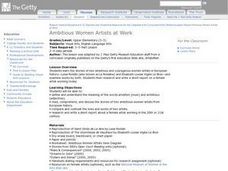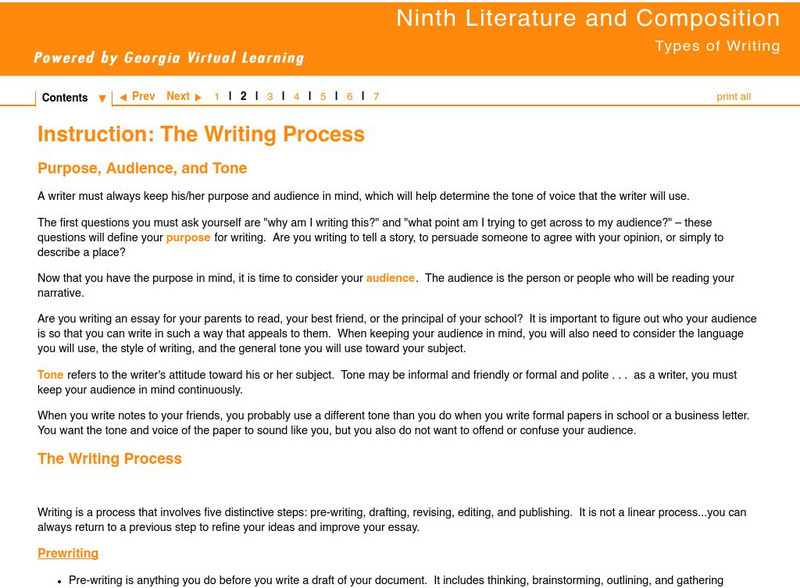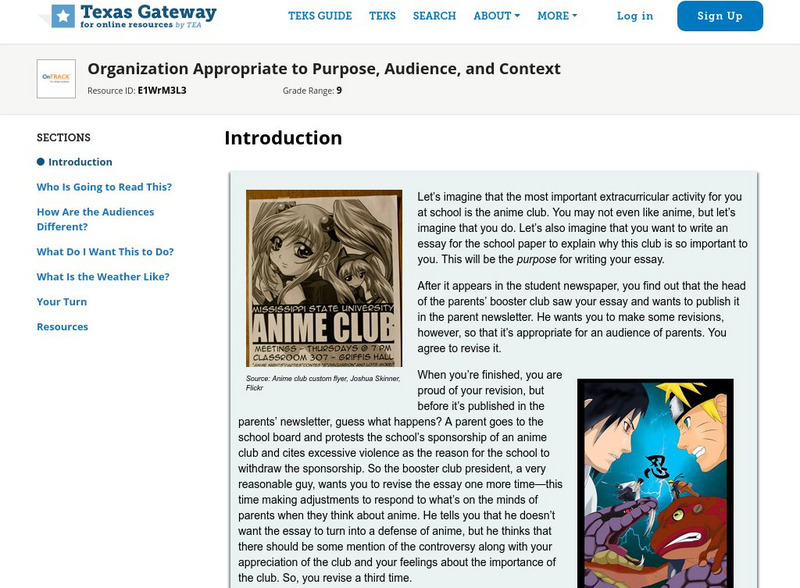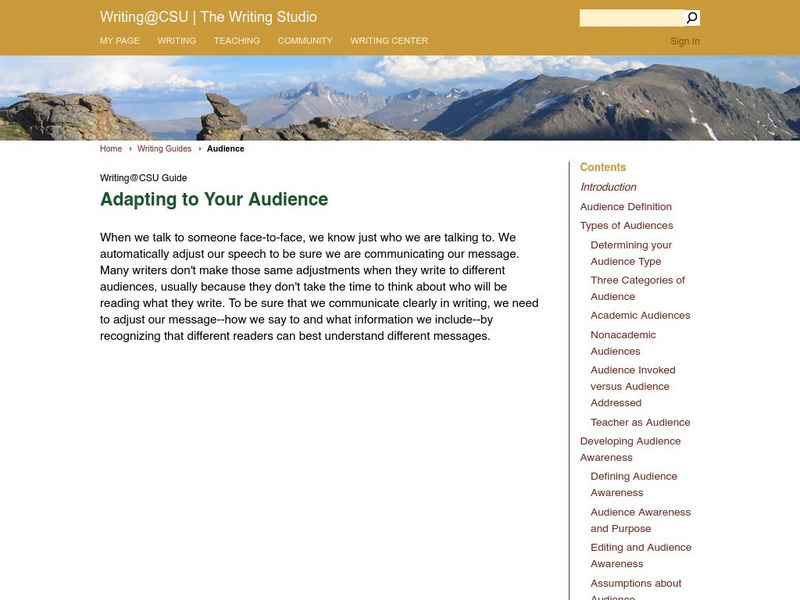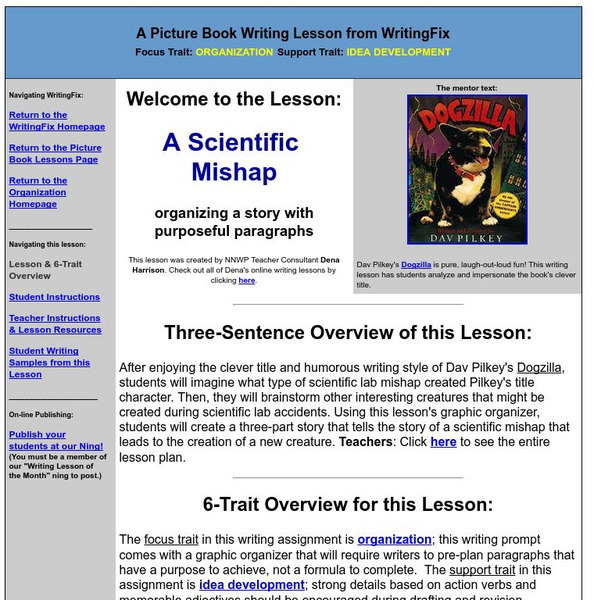Teaching Tolerance
Digital Activism Remixed: Hashtags for Voice, Visibility and Visions of Social Justice
It's time to discover hashtag activism! Using an engaging resource, learners explore viral hashtag campaigns relating to diversity, identity, and justice. Next, they either design their own hashtag campaigns or respond to existing ones.
Teaching Tolerance
Media Consumers and Creators, What Are Your Rights and Responsibilities?
Teach the class to separate fact from fiction. Scholars explore the topic of fake news as they read PEN America's News Consumers' Bill of Rights and discuss the rights and responsibilities outlined in the bill. Next, they read an article...
Teaching Tolerance
Using Photographs to Teach Social Justice | Legal Action: The Supreme Court
A social justice lesson focuses on the Supreme Court case Loving v. Virginia which struck down laws that prohibited marriages between African Americans and white Americans. The lesson begins with class members examining a photograph of...
Voices of a People's History
Voices in The Classroom
Everyone's perspective of the past is different. A thought-provoking unit gives young academics the opportunity to explore their perspectives on history and their neighborhoods. Based on the work of Howard Zinn, each lesson explores...
J. Paul Getty Trust
Ambitious Women Artists at Work
Ambition is the keyword of a lesson that focuses on the contributions made by famous female artists. Specifically looking at European artists, Luisa Roldan and Elisabeth Louise Vigee Le Brun, scholars examine a piece of their work then...
California Department of Education
Ready, Set, Test!
Ready to prepare young scholars for their first placement test experience? Give them the support they need using a test-focused instructional activity. Fifth in a series of six junior-level college and career readiness instructional...
Anti-Defamation League
10 Ideas for Teaching Black History Month
Celebrate Black History Month with the help of 10 ideas that delve deep into the history, major events, contributions, famous African Americans, and sheds light on how scholars today can take a proactive stance on current civil rights...
National Endowment for the Humanities
The World of Haiku
Students complete a study of Japanese culture through haiku. They read and interpret haiku poetry and write haiku of their own.
Other
Introducing Plain Language
This site by Plain Language Online states that plain language "begins with the needs of the reader," which will determine why and how the writer writes. It goes on to elaborate on audience and purpose, idea organization, use of...
Georgia Department of Education
Ga Virtual Learning: Ninth Literature and Composition: Types of Writing: Review
This lesson is a review of the unit on types of writing including purpose, audience, tone, the writing process, the four types of writing, and sentence fragments and run-ons. A quiz is provided.
Georgia Department of Education
Ga Virtual Learning: Ninth Lit and Comp: Types of Writing: The Writing Process
This lesson focuses on the writing process including understanding purpose, audience, and tone and the parts of the writing process: prewriting, drafting, revising, editing, and publishing.
Colorado State University
Colorado State Writing Center: Understanding Your Purpose
Use the links on the right to get a better understanding of purpose in writing including the types of purposes and how audience affects purpose. Click on Purpose and Audience and Purpose and Strategies. W.9-10.4 Write/Audience/Purpose;...
Texas Education Agency
Texas Gateway: Organization Appropriate to Purpose, Audience, and Context
[Accessible by TX Educators. Free Registration/Login Required] Write an essay that is organized appropriate to audience, purpose, and context. W.9-10.4 Write/Aud/purp, W.11-12.4 Clear/Coherent Writing
Texas Education Agency
Texas Gateway: Organization Appropriate to Purpose, Audience, and Context
[Accessible by TX Educators. Free Registration/Login Required] You will be able to write an essay that is organized appropriate to audience, purpose, and context.
Other
Berkeley County Schools: 2nd and 3rd Grade Writing Folder
This writing packet includes all final product tasks and writing process resources for all 2nd and 3rd grade students. Lists of transition words, homophones, parts of speech, and more are included.
Colorado State University
Colorado State Writing Center: Adapting to Your Audience
A clear guide to understanding the audience for your writing, this site leads you through steps to help you identify your audience, then structure your writing to meet that audience's needs and expectations. Use links on the right....
Queen's Printer for Ontario
Ontario Education: A Guide to Effective Instruction in Writing
This comprehensive guide is designed to provide classroom teachers of Kindergarten to Grade 3 with practical approaches and resources for delivering an effective writing program. Sample lessons are included for each topic discussed.
Joe Landsberger
Organizing and Pre Writing: Seven Stages of Writing Assignments
This research-based site provides step-by-step directions needed to complete an extended writing piece.
AdLit
Ad lit.org: A Sample Rubric for Grading Student Writing
All written work should be assessed using a rubric. Using a set of criteria linked to standards not only allows for uniform evaluation, but helps students understand what is important about an assignment and encourages them to reflect on...
AdLit
Ad lit.org: Analytical Writing in the Content Areas
Because writing is thinking, the organization of students' writing reflects both the structure of their thinking and the depth of their understanding. Students should be writing in all their classes, explaining what they know and how...
AdLit
Ad lit.org: Teach the Elements of Writing
It's a misconception that writing teachers simply tell students to write and wait to see what happens. Teachers should provide instruction in and exposure to various elements of writing to help students understand what good writing is.
AdLit
Ad lit.org: Key Literacy Component: Writing
Students who don't write well aren't able to learn and communicate effectively. This article explains what good writing skills are and how to help struggling young writers gain those skills through proper instruction.
Writing Fix
Writing Fix: Organizing a Story With Purposeful Paragraphs
In this lesson, students organize and design a narrative based on three developing ideas.
Grammarly
Grammarly Handbook: Writing Concisely
This page compares wordy writing to a art gallery cluttered with a mixture of great works and poor attempts making it hard to see the great works. Remove the clutter, write concisely so the reader gets the point of the paper. It offers...






